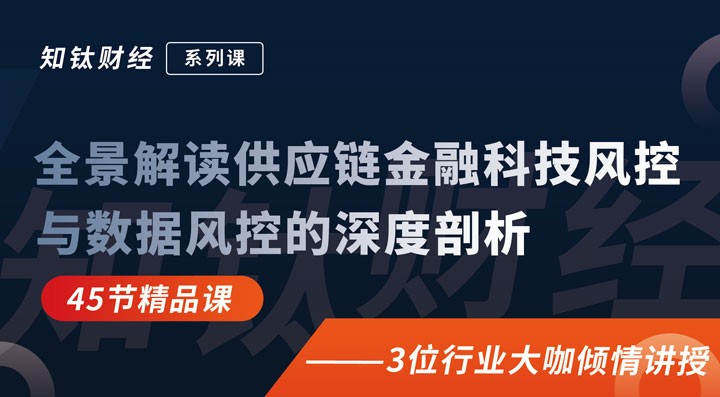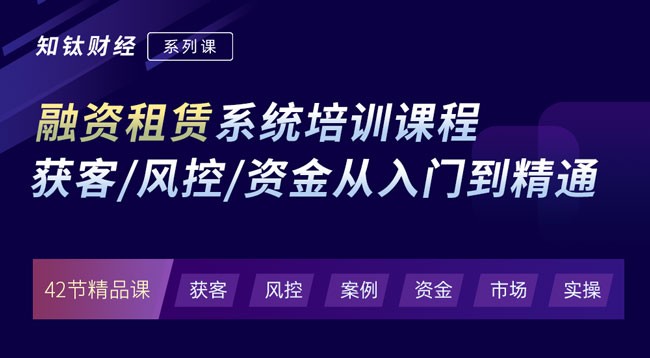新年看中国FinTech——过去、现在和未来前景
来源:中国国际电视台官网(英文)中国金融信息网(中文)转自:IMI财经观察新年伊始,万象更新。过去的一年,中国FinTech的发展受到全世界的瞩目
来源:中国国际电视台官网(英文)中国金融信息网(中文)
转自:IMI财经观察
新年伊始,万象更新。过去的一年,中国FinTech的发展受到全世界的瞩目。辞旧迎新之际,IMI执行所长贲圣林在中国国际电视台(CGTN)官网撰文,分析中国FinTech的过去、现在和未来前景。贲所长认为,中国在支付领域、P2P领域、互联网保险领域等Fintech领域均处于领先地位。中国友好的经济环境使中国在FinTech领域领先全球。目前监管政策更加注重遏制风险、维护金融稳定,中国的监管机构是否能在金融创新和金融稳定之间取得适当的平衡,这将对中国和世界FinTech的未来发展产生巨大的影响。
以下为文章全文:
一、FinTech在中国崛起的奇迹
2003年对于中国来说是艰难的一年。非典病毒肆虐,许多人只能被闷在家里办公。在中国东部一家鲜为人知的电子商务公司因此开始提供“网上支付”服务,进而推动和促进网上交易。十年后,在内蒙古北部偏远地区,同样一个鲜为人知的资产管理机构与上述电子商务公司合作,通过向该公司庞大的网络用户提供货币市场基金产品超越同业领先者成为中国第一大货币基金。而以往,货币市场基金仅是提供给大型机构和企业投资者的产品。这个在线支付服务就是“支付宝”。没有比“支付宝”更好的案例来说明在中国奇迹般崛起的FinTech。今天,支付宝拥有超过5亿用户,是世界上最大的在线和移动支付公司,其母公司蚂蚁金服也成为全球最大和最有价值的FinTech公司。
中国在FinTech的领导地位不仅限于支付领域。在P2P领域,世界上第一个P2P平台是在伦敦成立的Zopa,尽管在Zopa成立两年后中国第一家P2P平台拍拍贷才宣告成立,但在今天,中国P2P市场规模占全球成交量的60%以上,其中一些P2P公司在全球也处于领先地位。
互联网保险业也出现了类似的增长。随着消费保险产品的繁荣发展,众安保险,一个纯粹的在线保险公司,最近在香港证券交易所上市,成为了保险业最大的FinTech企业。
从宏观角度来看,中国拥有世界一流的FinTech生态系统。浙江大学互联网金融研究院最近的一项研究表明,珠三角(以深圳为核心)、长三角(以杭州和上海为核心)和北京已成为三个世界级的FinTech中心。
二、中国领先是偶然还是有意为之?
中国在FinTech领域已经居于领导者地位,这已经是全球的共识,我们也为此欢欣鼓舞。但是为什么成为领先却出现了不同的理论来解释这一现象。
一派思想认为,中国的金融市场一直在不成熟的制度下艰难发展,FinTech公司正好利用了这一市场不足。比如,货币市场基金“余额宝”和银行存款有不同的规定。余额宝不需缴纳存款准备金。毫无意外,余额宝的出现对银行业造成了很大的影响,而这一理论的拥趸往往在银行业。然而,与之针锋相对的一种反驳是,货币市场基金作为一种产品已经出现一段时间了,任何人都可以利用已被意识到的市场缺陷。因此,FinTech创新和强大的分销渠道才是使其成功的关键。
其他的争论包括对消费者权利(据报道FinTech机构并没有严格遵守数据隐私方面的消费者保护规则)或公平竞争(许多FinTech机构对其产品进行补贴)的不平等对待。毋庸置疑,中国友好的生态系统使中国在FinTech领域领先全球。不管是偶然还是有意为之,中国在FinTech领域居于领先却是不争的事实。
三、中国的FinTech发展前景
随着目前的政策重点转向更加注重金融稳定,一系列监管措施已经出台以遏制风险,金融行业从业者特别是FinTech机构倍感压力。金融创新和FinTech发展会继续受到鼓励吗?谁应该拥有主要的监管权?未来还有哪些监管规定会出台?它们将如何具体实施?市场需要而且正在焦急等待这些问题的明确答案。
人们普遍认为,FinTech崛起背后有三个主要的驱动力:享有金融服务的市场需求、技术进步和强大有力的政策与监管制度。由于仍然存在金融抑制,中国等发展中国家往往对基本金融服务有着强烈的需求,但这些需求尚未被满足或没有被完全满足。智能手机的技术进步起到了推动作用,使金融服务能够通过数字技术在任何时间、任何地点覆盖到大量用户。在这方面,腾讯和阿里巴巴作为全球互联网巨头,使中国在这方面又再次成为了领导者。
最近政策转向了风险控制。中国的监管机构是否能在金融创新和金融稳定之间取得适当的平衡?这个问题的答案将对中国和世界FinTech的未来发展产生巨大的影响。
翻译:姜楠
FinTech in China: The Past, Present and Future Prospects
Ben Shenglin
China’s Miraculous Rise in FinTech
2003 was a tough year for China. The SARS panic shut down the country, leaving many people grounded at home. A little known e-commerce company in an east Chinese city started offering “online payment” services as part of its efforts to enable and facilitate online transactions. Ten years later, a little-known asset manager in the remote northern region of Inner Mongolia leapfrogged industry leaders by working with this company to distribute its simple money market fund products through its vast network of users, offering them access to money market funds that were traditionally reserved for large institutional and corporate investors. The online payment service is called Alipay, and there is no better company to illustrate the miraculous rise of FinTech in China. Today the company has over 500 million users and is the largest online and mobile payment company in the world. Its parent company Ant Financial has been consistently ranked as the largest and most valuable FinTech company in the world.
China’s leadership in FinTech is not just in payment services. In the peer-to-peer lending arena, China’s first marketplace lending platform PPMoney was founded two years after the London-based ZOPA, the first P2P lending platform in the world. But today, Chinese marketplace lenders account for more than 60 percent of global volume and some of them are global leaders in the sector.
The insurance sector has seen a similar rise. Riding on the boom in consumer insurance products, Zhongan, a purely online insurance provider, was recently listed on the Hong Kong Stock Exchange, making it the largest FinTech player in the insurance sector.
From a macro perspective, China boasts a world-class FinTech ecosystem. A recent study by the Academy of Internet Finance, Zhejiang University, shows that the Pearl River Delta region (with Shenzhen as its core), the Yangtze River Delta region (with Hangzhou and Shanghai as the core) and Beijing have emerged as three world-class FinTech hubs.
Global Leader by Accident or Design?
Though there is much celebration and consensus about China’s position as a global leader in FinTech, there are different theories about why China is on top.
One school of thought is that the FinTech companies in China exploited loopholes in the Chinese market, which has struggled with less than sophisticated regulations. The one powerful argument in support of this theory is that money market fund Yuebao and bank deposits are subject to different regulations. For example, Yuebao is not subject to deposit reserves. Not surprisingly, this argument has a big following in the banking industry. However, the counter argument from the FinTech world is that the money market fund as a product had been around for a while, and anybody could have taken advantage of the perceived loopholes. Therefore FinTech’s innovative and powerful distribution channels made the difference.
Other arguments range from unequal treatment of consumer rights (pure FinTech players reportedly do not strictly abide by consumer protection rules on areas like data privacy) or fair competition (many FinTech players heavily subsidize their products). Different theories aside, it can be said that it is China’s generally friendly ecosystem that has made it a global leader in FinTech. Whether or not it was by accident or by design remains highly debatable.
Fintech China: Cloudy Prospects?
As the Chinese government shifts its policy priority to focus more on financial stability, a flurry of regulatory and administrative measures have been rolled out to contain risks, and industry players are feeling the pressure. While the government has provided some general guidance, details remain sketchy. Will the government continue to encourage financial innovation and FinTech? Who has the primary regulatory authority? What regulations are coming? How are they going to be applied? The market needs and is anxiously awaiting clarity.
It is generally agreed that there are three primary drivers behind innovation in FinTech: the market demand for affordable financial services, technological progress and a robust policy and regulatory regime. China and the developing world tend to have strong unmet or under-met demand for basic financial services, given financial repression in these markets. Technological progress in smartphones serves as an enabler, making it possible for services to be delivered digitally to large numbers of customers anytime, anywhere. In this area, China again is a leader, with global internet giants like Tencent and Alibaba.
The third enabler is the policy and regulatory environment. China was probably the best playground for FinTech when it had few regulations or lax enforcement, leading to vibrant entrepreneurship and plenty of capital backing up investment opportunities. But the recent policy shift towards risk containment is swinging the pendulum, and along with it the risk of inhibiting the entrepreneurship that has made China a global leader in the first place. The policy risk and regulatory uncertainty have already had a negative impact on the sector, casting doubt over its long-term prospects. Will Chinese regulators be sound enough to strike the right balance between financial innovation and stability? Answers to this question will have huge implications for China and the FinTech sector for many years to come.
 表情
表情

